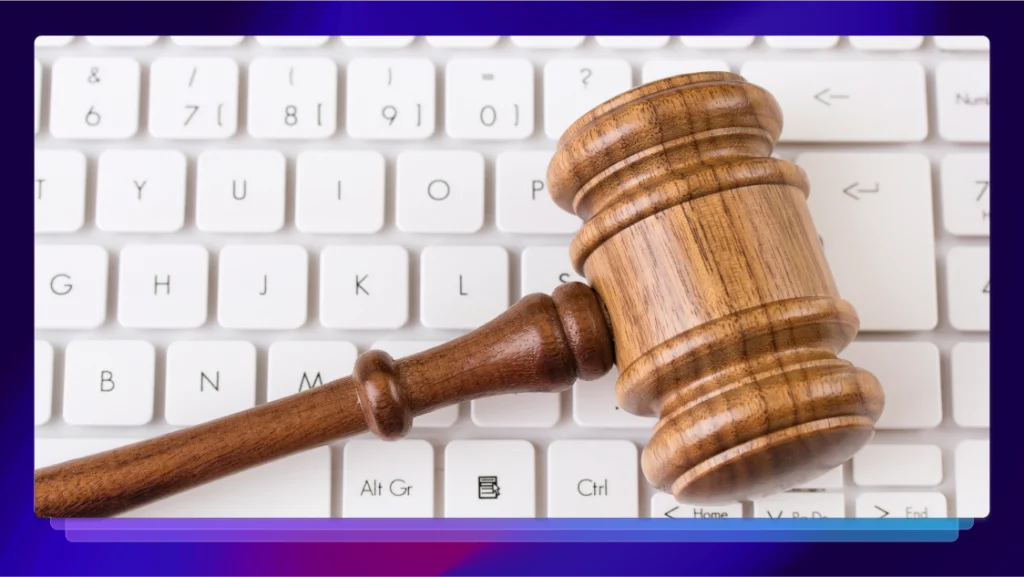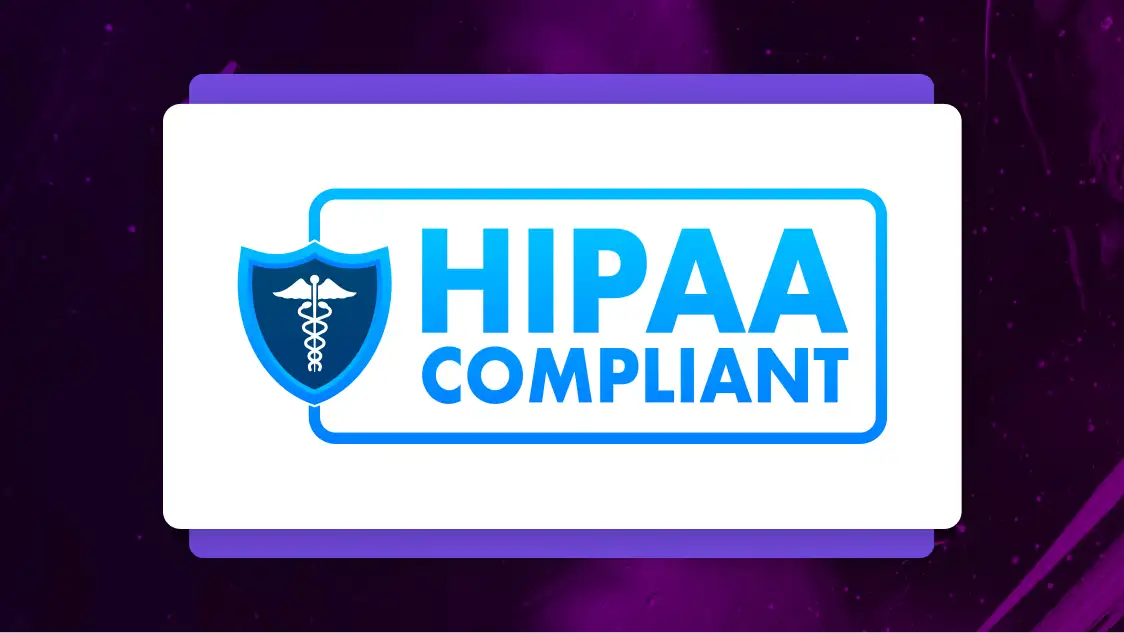What Is Digital Court Reporting?
Digital court reporting is similar to stenographic court reporting, but with some slight technology-based differences. Here’s what to know.

Online. Cloud-based. Remote. Our way of working sure has changed over the last few years. Jobs that always seemed like they’d be exclusively in-person have now gone digital.
Digital court reporting is a perfect example of the shift toward tech in everyday jobs. Much like online food ordering or automated assembly lines, the job has evolved. That classic image of the stenographer hunched over an ever-growing pile of scrolling paper tape has largely become a thing of the past. Digital court reporting is now the norm, whether the reporter is onsite or working remotely via a video deposition.
But what do digital court reporters do, and how is the job different than it used to be? Read on!
Understanding the Basics: What Digital Court Reporters Do
The digital court reporter does a lot more than transcribe what is being said in court. In many cases, they set up an entire sound system to capture everything that happens in the court or deposition room. This might include area microphones, lavalier mics for each potential speaker, cameras, a sound mixer, and computers running transcription software. Before a digital court reporter ever captures a spoken word, they must have a set focus on the equipment’s readiness to capture audio.
Once the audio and/or visual equipment is working properly, there are a few steps that will take place before the official proceeding starts. There will be an administration of oaths, collection of reference documents, and ancillary session management duties. Then the proceeding can begin.
While the recording software captures every spoken word for that transcription, the digital court reporter takes extensive notes, makes sure that speakers aren’t offering too much crosstalk, directs people to speak louder or more clearly, and generally ensures that the recording is crisp and clean. The audio mixer ensures that every speaker is recorded on a separate track so that speaker identification is easier and succinct later on.
What About Traditional Stenographic Court Reporters?
Traditional court reporters, or stenographic court reporters are very similar to digital court reporters. They still have to set up equipment, though that equipment isn’t audio-based. Both digital reporters and stenographic reporters report in person and remotely, however, the in-person setup for digital is more extensive than remote because they’re able to leverage technology that exists within their laptops, as opposed to setting up the mixers, lavalier microphones, and other equipment.
Instead of microphones and audio mixers, a traditional stenographic court reporter uses a special machine called a stenograph or stenotype machine. This machine allows the court reporter to record the proceedings in shorthand form. The machine will then translate the shorthand into readable English. Later, the stenographer will revisit the document to proofread for errors. Once this process and formatting are complete, the court reporter prepares the final draft for legal use.
Both digital court reporters and traditional court reporters often undertake tasks aside from capturing the legal record. They might administer the oath to a witness, mark exhibits for the record, direct speakers to speak louder, more slowly, ask for spelling clarification, or eliminate crosstalk. To ensure accuracy, these parts of the job must be done whether digital reporting or stenography captures the record.
Benefits of Going Digital in Court
“If it ain’t broke, don’t fix it,” goes the old adage. Traditional court reporting seemed to work just fine, didn’t it? Why would a court reporter make the effort to become a digital court reporter?
Well, there are a number of reasons why court reporting has gone digital. The most important reason is that there’s been a massive shortage of court reporters for more than a decade, and it increases every year. So anything that can make the profession more accessible, like remote legal court reporting, is a welcome development. Other benefits of going digital in court include:
- Shorter turnaround times for legal transcription
- Digital audio and video files are very easy to deliver online compared to reams of legal documents sent through the mail
- Audio and video files provide accurate legal transcription that is easy to review
- Video recordings help verify the accuracy
Potential Risks of Digital Court Reporting
Technology is great but there’s always risk when it takes over a previously analog task. Digital court reporting is not immune from the risks that come with tech. With digital court reporting, you risk:
- Technical issues. Microphones never work all the time. The wi-fi could wink out. And good luck if you rely on Bluetooth! Digital court reporting relies upon its backup systems, because you never know what might go wrong.
- Hackers. Or, to be more accurate, data leaks. Cyber attacks seem to be a constant threat to digital files, so it’s very important for digital court reporters to have airtight cybersecurity.
- High costs. When outfitting your digital setup, those laptops, audio mixers, microphones, cameras, and editing software add up quickly. Troubleshooting them can sometimes cost money, too.
How Rev Keeps You Safe Online
Data breaches and cyber attacks seem to be a part of our everyday lives these days. It’s one thing to have your email password hacked, but it’s a much bigger deal when sensitive legal documents are at risk. Whether you’re providing remote deposition services or transcribing court proceedings, you need to make sure your data is safe.
Rev safeguards our customers’ data by maintaining compliance with a number of both internationally recognized and industry-specific security and privacy standards, including SOC 2 Type II, GDPR, HIPAA, and PCI compliance. All customer data is encrypted at all times. Data stored on Rev’s platform is encrypted via industry best-practice standards like TLS, which we also use to encrypt emails.
How to Help Your Team Go Digital
The National Court Reporters Association estimates a shortage of 5,000 court reporters, so going digital might be a necessity more than a luxury. But how do you transition from analog to digital court reporting?
First, it’s not incredibly difficult for a stenographer to “go digital” since the essence of the job remains the same. It’s just the method of capturing information that’s different. In order to become a digital court reporter, you or your team will likely need to become certified, though the requirements vary on the state level.
Most states require a certification from the American Association of Electronic Reporters and Transcribers, which offers three options:
- Certified Electronic Court Reporter (CER)
- Certified Electronic Transcriber (CET)
- Certified Deposition Reporter
These certification tests do cost some money, so covering the costs for your team can really help ease the transition.
The other major need when transitioning to digital court reporting is equipment, tools, and software. An onsite digital recorder essentially needs a full recording suite including microphones, sound mixers, editing software, cameras, and computers. These can be high-ticket items so purchasing them for the team and also investing in some training for their usage can make a difference. Court reporters who work remotely have it a little easier on the equipment end. They still need a laptop with capable editing and recording software, but don’t need the microphones or mixing equipment.
Helping your team understand digital etiquette can be important as well. It’s easy to be professional, cordial, and businesslike in person, though consider if your digital court reporters work remotely, some etiquette training might be necessary. Stress that business attire is preferred, their physical surroundings should be professional and not distracting (to everyone on both sides of the screen), and how even at a remote proceeding, you’re still part of the legal process and should act as such.
Looking Ahead at the Digital Court Reporting Landscape
If the shortage of stenographers and court reporters is any indication, digital court reporting is not only here to stay, but will eventually become the norm in the industry.
While a digital court reporter salary currently lags behind traditional court reporter salaries, we predict that they’ll even out as digital becomes more mainstream. And while AI court reporting is always a possibility as automatic speech recognition gets better and better, there will always be a need for a human in control of the proceedings, whether they’re analog, digital, or remote.
Security will always be an issue with digital court reporting, as will the inherent distrust of legal automation technology that many people hold. As the need for digital court reporting expands, we can see a more standardized system of requirements being put in place. At the moment, every state has different rules and requirements for digital court reporters. The creation of a single governing body or association that would create uniform best practices used by every state would help the entire court reporting industry.
Going Digital? Rev Can Help.
Just like traditional court reporting, digital court reporting requires transcription. Due to the sensitive and important nature of the content, those transcriptions must be as accurate and secure as possible.
Luckily, accuracy and security are what we’re known for. With our quick turnaround times and 99% accuracy, Rev makes it easy for court reporters to get reliable transcription. Whether you’re digital or not!
Heading
Heading 1
Heading 2
Heading 3
Heading 4
Heading 5
Heading 6
Lorem ipsum dolor sit amet, consectetur adipiscing elit, sed do eiusmod tempor incididunt ut labore et dolore magna aliqua. Ut enim ad minim veniam, quis nostrud exercitation ullamco laboris nisi ut aliquip ex ea commodo consequat. Duis aute irure dolor in reprehenderit in voluptate velit esse cillum dolore eu fugiat nulla pariatur.
Block quote
Ordered list
- Item 1
- Item 2
- Item 3
Unordered list
- Item A
- Item B
- Item C
Bold text
Emphasis
Superscript
Subscript

Subscribe to The Rev Blog
Sign up to get Rev content delivered straight to your inbox.




